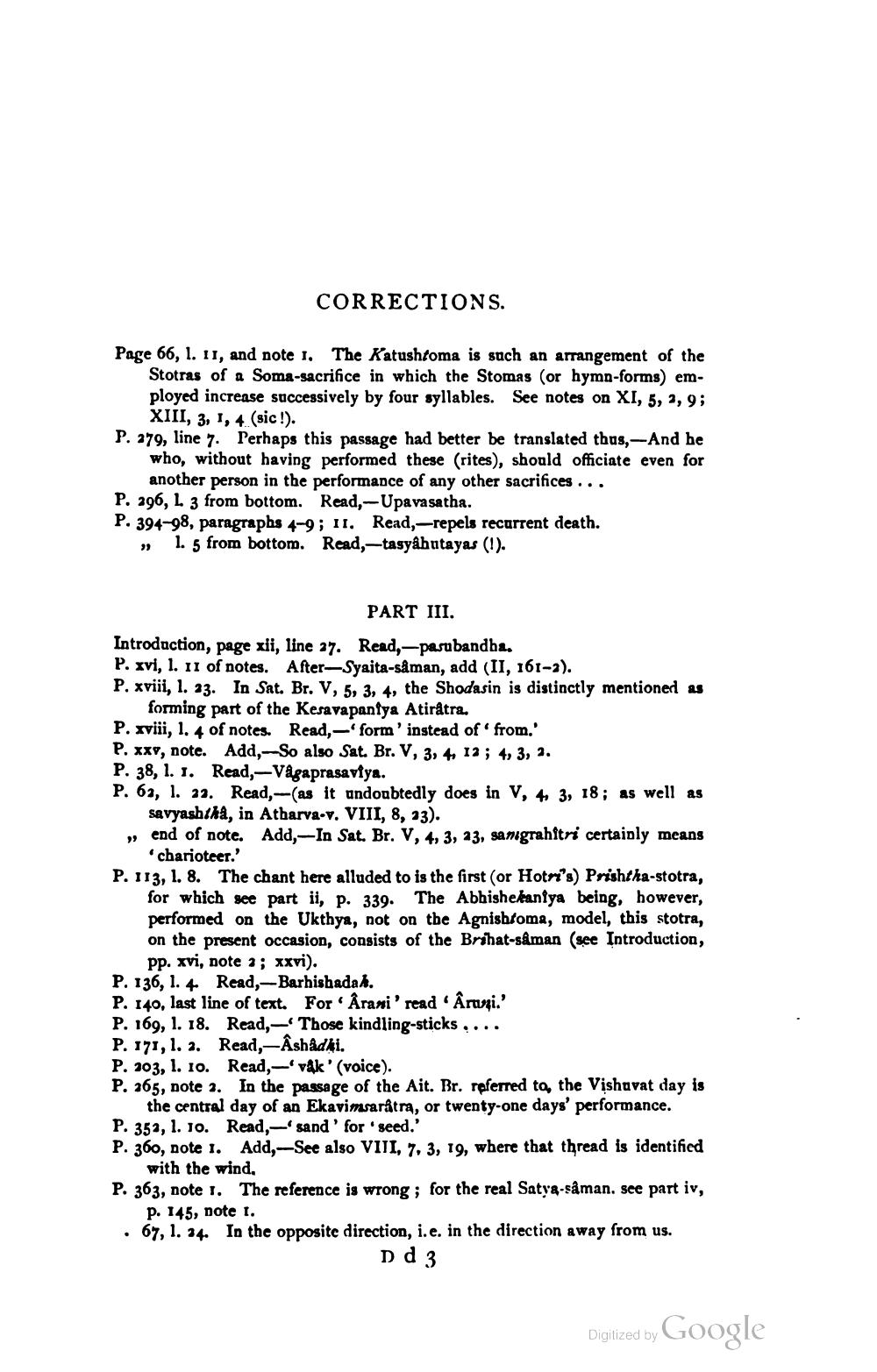________________
CORRECTIONS.
Page 66, 1. 11, and note 1, The Katushtoma is such an arrangement of the
Stotras of a Soma-sacrifice in which the Stomas (or hymn-forms) employed increase successively by four syllables. See notes on XI, 5, 2, 9;
XIII, 3, 1, 4.(sic!). P. 279, line 7. Perhaps this passage had better be translated thus,-And he
who, without having performed these (rites), should officiate even for
another person in the performance of any other sacrifices ... P. 296, L 3 from bottom. Read, -Upavasatha. P. 394-98, paragraphs 4-9; II. Read,-repels recurrent death.
» 1. 5 from bottom. Read, -tasyahutayas (!).
PART III. Introduction, page xii, line 27. Read,-pasubandha. P. xvi, 1. 11 of notes. After-Syaita-såman, add (II, 161-2). P. xviii, 1. 33. In Sat. Br. V, 5, 3, 4, the Shodasin is distinctly mentioned as
forming part of the Kesavapantya Atiratra. P. xviii, 1. 4 of notes. Read, - form' instead of from.' P. xxv, note. Add, So also Sat. Br. V, 3, 4, 12; 4, 3, 2. P. 38, 1. 1. Read,- Vågaprasaviya. P. 62, l. 33. Read,---(as it undoubtedly does in V, 4, 3, 18; as well as
savyashtha, in Atharva.v. VIII, 8, 33). » end of note. Add-In Sat. Br. V, 4, 3, 23, sanigrahitri certainly means
charioteer. P. 113, 1. 8. The chant here alluded to is the first (or Hotri's) Prishtha-stotra,
for which see part ii, p. 339. The Abhishekantya being, however, performed on the Ukthya, not on the Agnishtoma, model, this stotra, on the present occasion, consists of the Brihat-s&man (see Introduction,
pp. Xvi, note 2 ; xxvi). P. 136, 1. 4 Read, -Barhishadak. P. 140. last line of text. For Ârani' read Âruni.' P. 169, 1. 18. Read, — Those kindling-sticks .... P. 171, 1. 2. Read, Ashadhi. P. 103, 1. 10. Read, -vak' (voice). P. 365, note 3. In the passage of the Ait. Br. referred to, the Vishavat day is
the central day of an Ekavimsarátra, or twenty-one days' performance. P. 352, 1. 10. Read, sand' for 'seed.' P. 360, note 1. Add,--See also VIII, 7, 3, 19, where that thread is identified
with the wind, P. 363, note 1. The reference is wrong; for the real Satya-saman. see part iv,
p. 145, note 1. . 67, 1. 34. In the opposite direction, i.e. in the direction away from us.
Dd3
Digitized by Google




